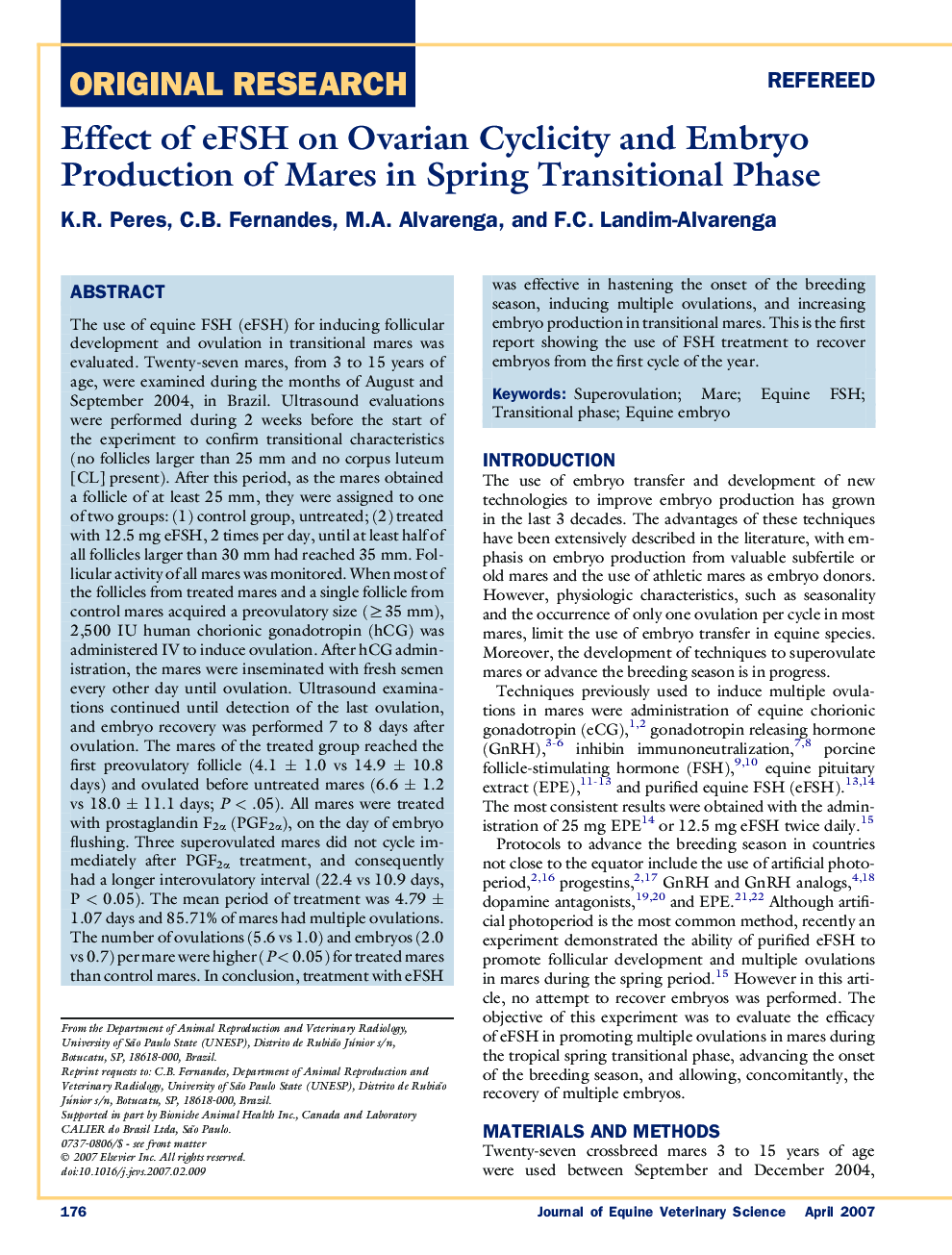| کد مقاله | کد نشریه | سال انتشار | مقاله انگلیسی | نسخه تمام متن |
|---|---|---|---|---|
| 2396459 | 1101623 | 2007 | 5 صفحه PDF | دانلود رایگان |

The use of equine FSH (eFSH) for inducing follicular development and ovulation in transitional mares was evaluated. Twenty-seven mares, from 3 to 15 years of age, were examined during the months of August and September 2004, in Brazil. Ultrasound evaluations were performed during 2 weeks before the start of the experiment to confirm transitional characteristics (no follicles larger than 25 mm and no corpus luteum [CL] present). After this period, as the mares obtained a follicle of at least 25 mm, they were assigned to one of two groups: (1) control group, untreated; (2) treated with 12.5 mg eFSH, 2 times per day, until at least half of all follicles larger than 30 mm had reached 35 mm. Follicular activity of all mares was monitored. When most of the follicles from treated mares and a single follicle from control mares acquired a preovulatory size (≥35 mm), 2,500 IU human chorionic gonadotropin (hCG) was administered IV to induce ovulation. After hCG administration, the mares were inseminated with fresh semen every other day until ovulation. Ultrasound examinations continued until detection of the last ovulation, and embryo recovery was performed 7 to 8 days after ovulation. The mares of the treated group reached the first preovulatory follicle (4.1 ± 1.0 vs 14.9 ± 10.8 days) and ovulated before untreated mares (6.6 ± 1.2 vs 18.0 ± 11.1 days; P < .05). All mares were treated with prostaglandin F2α (PGF2α), on the day of embryo flushing. Three superovulated mares did not cycle immediately after PGF2α treatment, and consequently had a longer interovulatory interval (22.4 vs 10.9 days, P < 0.05). The mean period of treatment was 4.79 ± 1.07 days and 85.71% of mares had multiple ovulations. The number of ovulations (5.6 vs 1.0) and embryos (2.0 vs 0.7) per mare were higher (P < 0.05) for treated mares than control mares. In conclusion, treatment with eFSH was effective in hastening the onset of the breeding season, inducing multiple ovulations, and increasing embryo production in transitional mares. This is the first report showing the use of FSH treatment to recover embryos from the first cycle of the year.
Journal: Journal of Equine Veterinary Science - Volume 27, Issue 4, April 2007, Pages 176–180